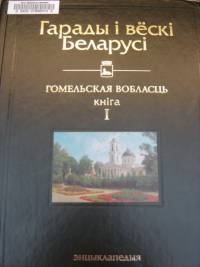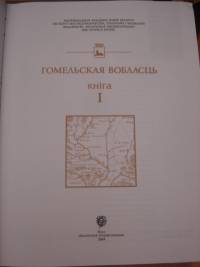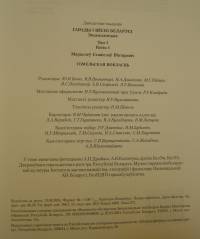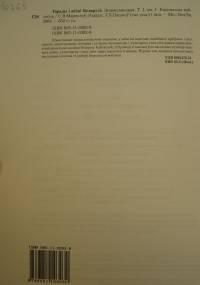sources:tvb:start
This is an old revision of the document!
Гарады і вёскі Беларусі: Энцыклапедыя - Towns and Villages in Belarus: An Encyclopedia
- Гарады і вёскі Беларусі: Энцыклапедыя. Т.1, кн.1. Гомельская вобласць/С. В. Марцэлеў; Рэдкалегія: Г. П. Пашкоў (галоўны рэдактар) і інш. — Мн.: БелЭн, 2004. 632с.: іл. Тыраж 4000 экз. ISBN 985-11-0303-9 ISBN 985-11-0302-0
- Harady i vioski Bielarusi: Encyklapiedyja. T.1, kn.1. Homieĺskaja voblasć/S. V. Marcelieŭ; Redkaliehija: H. P. Paškoŭ (haloŭny redaktar) i inš. — Mn.: BielEn, 2004. 632s.: il. Tyraž 4000 ekz. ISBN 985-11-0303-9 ISBN 985-11-0302-0
- Towns and villages in Belarus: An Encyclopedia. Volume 1, Book 1. Gomel region / S. B. Martselev; Editorial Board: GP PASHKOV (Editor), and others. - Mn.: BelEn, 2004. 632s.: Il. Circulation of 4,000 copies. ISBN 985-11-0303-9 ISBN 985-11-0302-0
Page 581-583 - Юравічы
Geography
- Yurevichi is located 167.5m above sea level
- Marina on River Pripyat about 1km away
History
Antiquity
- Site of iron age settlement
Medieval Period
- Tartar and Mongol raids around 1240 burned down a fortified castle that stood in this area.
- Early city may have been called Vidolichy (Вiдолiчы) or Mezhymostse (Межымосце)
Modern Period
- In 1510, King Sigismund I the Elder (Жыгiмонт I Cтары) gives “for eternity” the village of Yurovichi to his official Bogdan Serbinavu (Багдану Сербiнаву)
- Jesuits arrive in second-half of the 17th century. Wooden monastery built c.1673. Two-story stone monastery later built in 1700s.
- King John III Sobieski (каролъ Ян III Сабескi) issues charter for Yurevichi town in 1683.
- November 1920 pogrom led by Bułak-Bałachowicz (банды Булак-Балаховіча) “gang” killed 18 “people”
- Orphanage opens in 1928
- In 1936, a folk choir is formed and becomes widely known
- “Belorussian Patriotic War”
- April 1943 guerrillas defeat the stronghold that the Germans created in the town. Fighting around the village killed 312 soldiers, who were burried in a mass grave.
- 188 Yurevichi residents killed on the front lines and partisan struggle. An obelisk memorial erected in 1967.
Population
Confirm translation of “household” vs “house”/“buildings”. The census figures may actually be referring to buildings, not families.
- 1834: the town had 51 households and the village 66 households.
- 1848: 115 households
- 1866: 134 households
- 18971)
- Town: 201 households, 1320 people
- Village: 108 households and 600 people
- 1930
- Town: 114 households, 463 residents
- Villages Yurevichi-1 and Yurevichi-2: 300 households, 1537 residents
- 1939: 2546 residents
Schools
- 1865 Men's technical college (народны вучылiшча), built by Boguslaw Askerko. There are 45 students in 1885.
- 1875 Woman's trade school (Дзейнiчала жаночае вучылiшча), built by Boguslaw Askerko, opens. There are 25 pupils by 1885.
- 1897 Census
- Town: 2 religious schools (малітоўныя школы)
- Village: 2 town schools (народны вучылішчы)
- 1935 Original town schools now have 7 grades with 504 pupils
Gentry
- Boguslaw Askerko (Багуслаў Аскерка) - gave money in 1866 to rebuild Jesuit church in Orthodox style, 1865 to found a men's technical college and 1875 to found a women's trade school.
- Bakunenka (Бакуненка) - Estate owner who owned 3590 acres (дзесяціна зямлi) and horse-powered grain mill
Commerce
- Late 1800s: Farming, trading of crafts including pottery
- 18972)
- Town: 40 shops (лавак), 4 tanneries (майстэрні па апрацоўцы скуры), 2 taverns (карчмы)
- Village: Postal telegraph office, pharmacy, bakery or bread store (хлебазапасны магазін), 2 windmills (ветракі), horse farm (конны млын) and tavern (карчма). A farm named Yurovichi was nearby.
- 1930 Collectives “Red Banner” (Чырвоны Сцяг) and “Drummer” (Ударнік)
- Brick and pottery
- Blacksmith
- Shoemaker
- Sheepskin cooperative
- Steam and windmills
- 2 forges
- “kruparushka” (крупарушка)3)
sources/tvb/start.1381173112.txt.gz · Last modified: 2023/03/04 21:57 (external edit)




